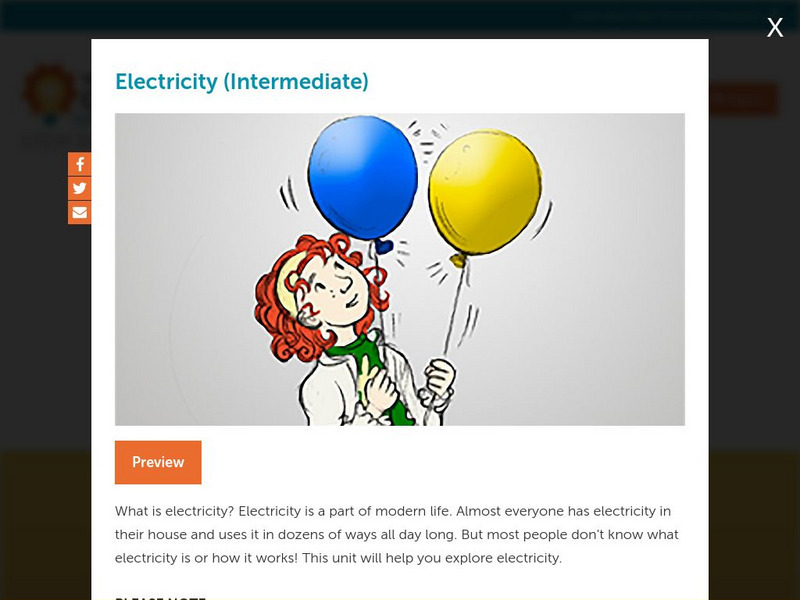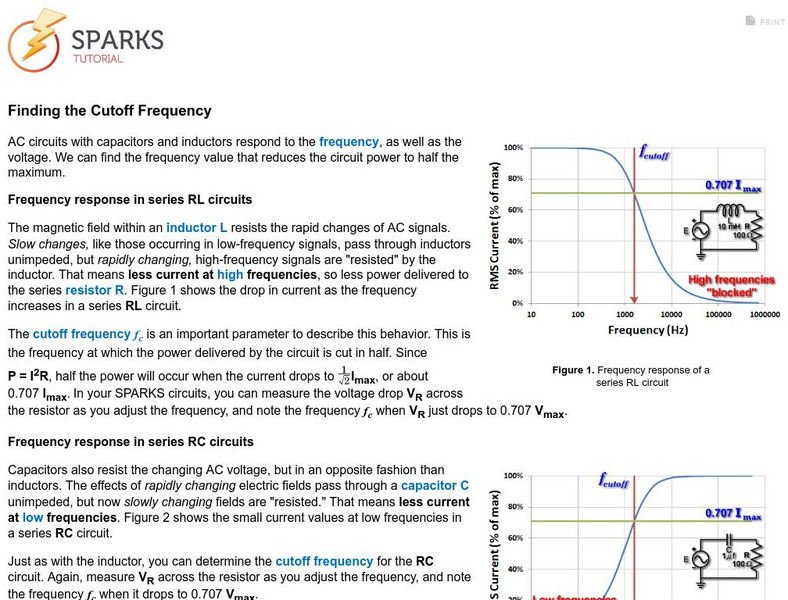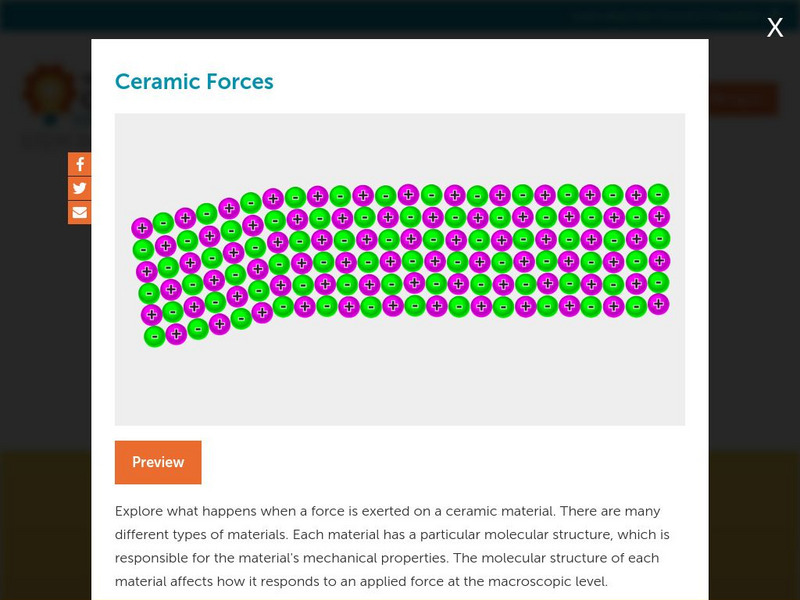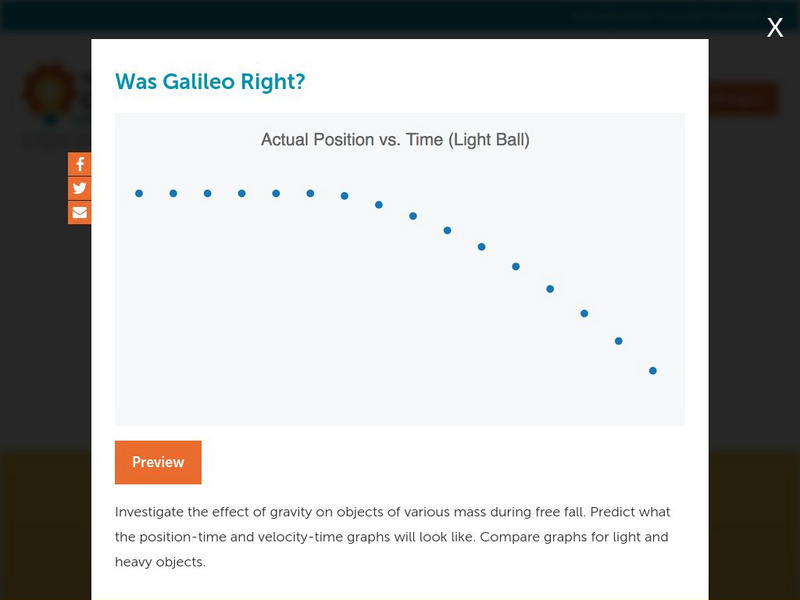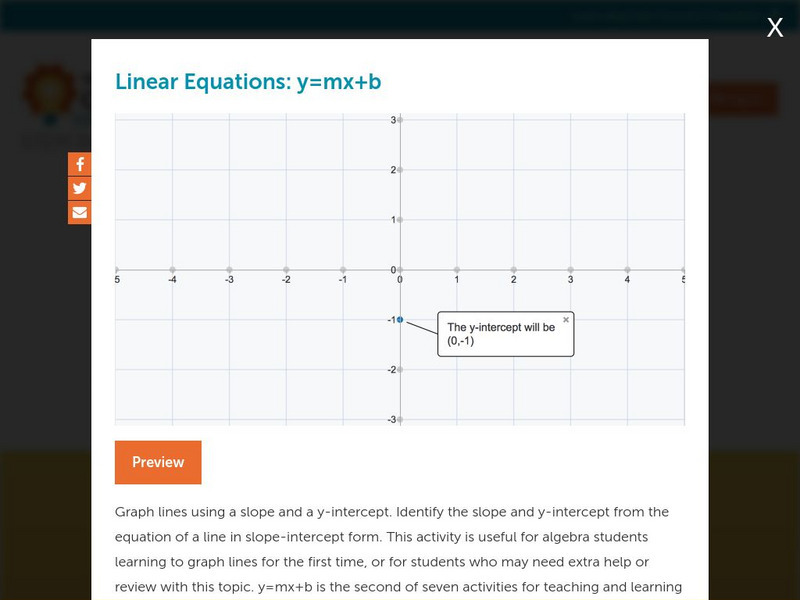Concord Consortium
Concord Consortium: Measuring Current in Series Parallel Circuits
Measure current through resistances in series-parallel circuits requires current-measuring skills used in both series and parallel circuits.
Concord Consortium
Concord Consortium: Measuring Voltage in Series Parallel Circuits
Measuring voltage drops across resistances in series-parallel circuits requires an understanding of both series and parallel circuit behavior. Learn more with this tutorial.
Concord Consortium
Concord Consortium: Measuring Voltage in Series Circuits
Measuring the voltage in a circuit is like measuring the drop in pressure across two points. Learn more with this tutorial.
Concord Consortium
Concord Consortium: Electricity (Intermediate)
Explore how electricity works in this module. (Requires Java)
Concord Consortium
Concord Consortium: Clouds and the Water Cycle (Intermediate)
Explore the water cycle by way of the clouds.
Concord Consortium
Concord Consortium: Plants (Intermediate)
What do plants eat? This unit explores plants and how they make food. (Requires Java)
Concord Consortium
Concord Consortium: Friction
What if there were no friction? This unit explores the role of friction in everyday life. (Requires Java)
Concord Consortium
Concord Consortium: Electricity
How does electrical energy get from one place to another? Explore how electricity is moved around and transformed into other forms of energy. (Requires Java)
Concord Consortium
Concord Consortium: Plants
What do plants eat? This unit explores plants and how they make food. (Requires Java)
Concord Consortium
Concord Consortium: Sparks Tutorial: Using an Oscilloscope
Learn how to use an oscilloscope.
Concord Consortium
Concord Consortium: Sparks Tutorial: Finding the Cutoff Frequency
AC circuits with capacitors and inductors respond to the frequency, as well as the voltage. Find the frequency value that reduces the circuit power to half the maximum.
Concord Consortium
Concord Consortium: Measuring Ac Circuits With a Dmm
Find out how the SPARKS DMM can measure AC voltage and current.
Concord Consortium
Concord Consortium: Calculating Impedance
A short tutorial about calculating impedance.
Concord Consortium
Concord Consortium: Ceramic Forces
Explore what happens when a force is exerted on a ceramic material. The molecular structure of the material affects how it responds to an applied force at the macroscopic level.
Concord Consortium
Concord Consortium: Metal Forces
Explore what happens when a force is exerted on a metallic material. The molecular structure of the material affects how it responds to an applied force at the macroscopic level.
Concord Consortium
Concord Consortium: Plastic Forces
Explore what happens when a force is exerted on a polymeric plastic material. The molecular structure of a material affects how it responds to an applied force at the macroscopic level.
Concord Consortium
Concord Consortium: Tire Forces
Explore what happens when a force is exerted on a rubber tire. The molecular structure of each material affects how it responds to an applied force at the macroscopic level.
Concord Consortium
Concord Consortium: Quadratic Functions in Vertex Form
Given the equation of a quadratic function in vertex form, students learn to identify the vertex of a parabola from the equation, and then graph the parabola.
Concord Consortium
Concord Consortium: Was Galileo Right?
Investigate the effect of gravity on objects of various mass during free fall. Predict what the position-time and velocity-time graphs will look like. Compare graphs for light and heavy objects.
Concord Consortium
Concord Consortium: Solving Systems of Equations
Two linear equations, with two variables, are presented and students use graphs to solve the system of equations.
Concord Consortium
Concord Consortium: Systems of Equations Word Problems 1
Students explore two real-life scenarios that involve solving systems of equations.
Concord Consortium
Concord Consortium: Systems of Equations Word Problems 2
Students explore two new scenarios that involve solving systems of equations. They will improve their understanding of how using mathematics to model a real-life situation with two variables can help them solve problems.
Concord Consortium
Concord Consortium: Linear Equations: Y=mx+b
Graph lines using a slope and a y-intercept. Identify the slope and y-intercept from the equation of a line in slope-intercept form.
Concord Consortium
Concord Consortium: Linear Equations: Ski Slope
Explore slopes of lines and see how slope is represented on the x-y axes.





